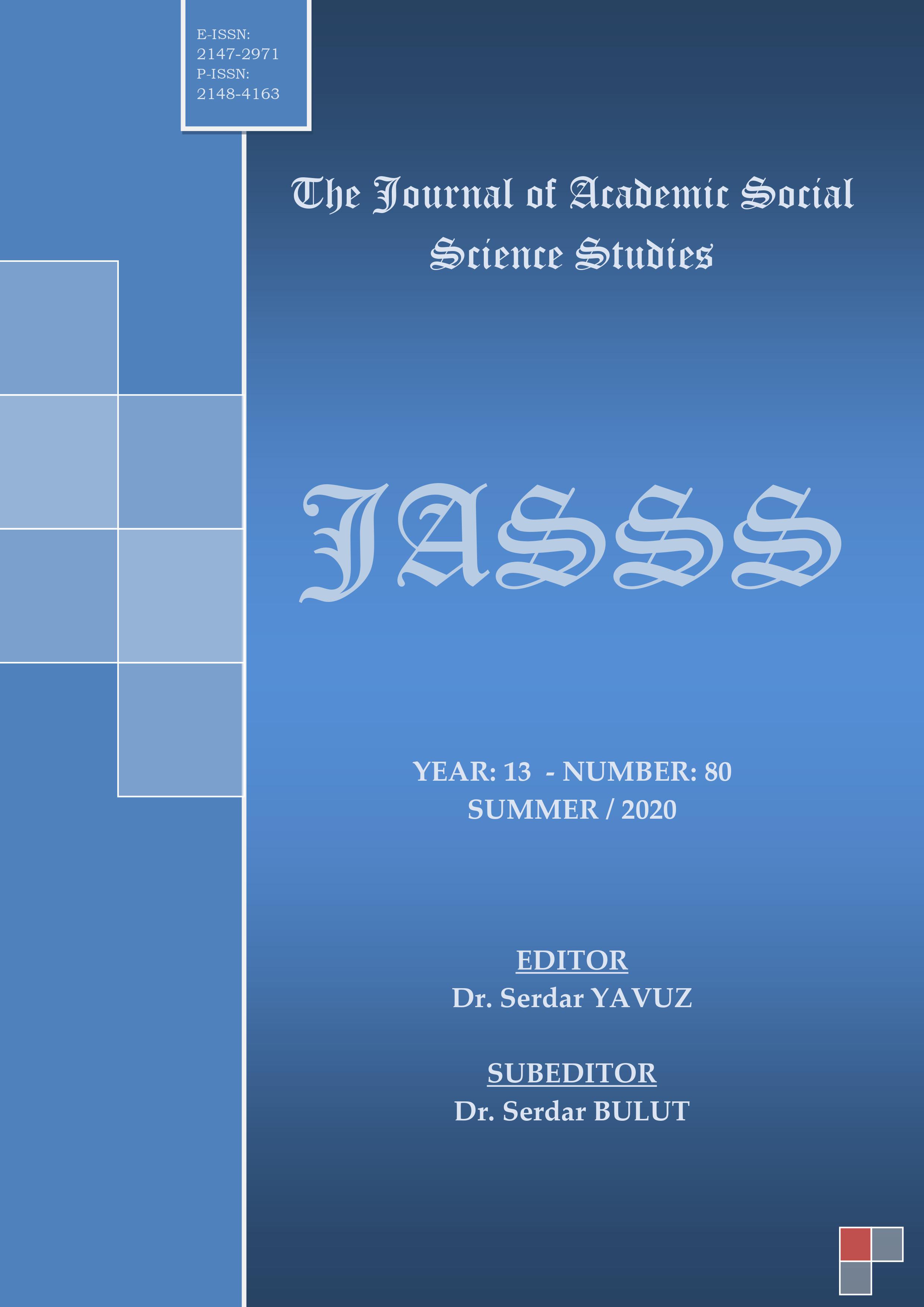Author :
Abstract
Firdevsî, 15. yüzyılın sonu ile 16.yüzylın başında Fatih Sultan Mehmet, II. Bayezıd ve Yavuz Sultan Selim dönemlerinde tıp, tarih, astronomi, edebiyat, felsefe, geometri gibi birçok alanda çalışmalar yapmış adeta bir yazı makinesi gibi çalışarak ilim âlemine hizmet etmiş bir mütefekkirdir. Birçok alanda eser vermesine rağmen Firdevsî’nin tanınmasını sağlayan eseri Süleyman-nâme-i Kebir’dir. Süleyman Peygamber’in hayatı etrafında gelişen olayları anlattığı Süleyman-nâme-i Kebîr 81. ciltten oluşan ansiklopedik bir eserdir. Hz. Süleyman ile ilgili bütün dinî rivâyetleri, hikâyeleri bir araya toplamış ve tarihi, efsânevî ve mitolojik şahıslara ve onların maceralarına ilişkin birçok hikâyeye yer vermiştir. Ayrıca Hz. Süleyman’ın hayatı ile ilgili fıkıh, hadis, tefsir, tasavvuf ve ahlâkla ilgili konuları hendese, nücum, geometri, felsefe, tıp, botanik, zooloji, astronomi ile birleştirmiştir. Türk milleti gelenek ve inanışlarında kutsal ve koruyucu bir güç olarak kabul ettiği birtakım bitki, hayvan, gök cismi gibi nesnelerin yanı sıra sayıları da kutsiyet atfedilen unsurlar olarak görmektedir. Geleneksel kültürde sayılar üzerine kurulan inançların kaynakları hem İslâm dinine hem de Orta Asya kültürel hayatına dayanmaktadır. Bu durum Türk edebiyatına yansımış ve Türk mitolojisinde, halkın inanç ve inanışlarında, destanlarda, efsanelerde, masallarda ve hikâyelerinde sıklıkla kullanılan unsurlar olarak dikkat çekmektedir. Firdevsî’de Süleyman-nâme’de sayılardan yararlanarak eseri tekdüzelikten kurtararak eseri akıcı ve ilgi çekici hale getirmeye çalışmış ve hendese (geometri), astronomi (ilm-i nücûm), tasavvuf, mitoloji, astroloji, tılsımla ilgili bilgiler verirken sayısal değerlerin hem nicelik hem de sembolik anlamlarından yararlanmıştır.
Keywords
Abstract
Firdevsi is a phlosopher who served the world of science working like a writing machine in many fields such as medicine, history, astronomy, literature, phlosophy, geometry in the periods of Fatih Sultan Mehmet, 2. Beyazıd and Yavuz Sultan Selim, in the late 15th and early 16th centuries. Despite creating works in many fields Süleyman-name-i Kebir is the work that enabled Firdevsi to be fecognized. Süleyman-name-i Kebir in which he described the events developed around the prophet Solomon's life is an encyclopedic work consisting of 81 volumes. He gathered all the religious narrations and stories about the prophet Solomon and he included many stories of historical, legendary and mythological people and their adventures. He also combined the canon law, tradition, commentary, mysticism and moral issues about the prophet Solomon's life with hendese, geometry, phlosophy, medicine, botanic and astronomy. In addition to objects such as plants, animals and celestial bodies that the Turkish nation considers as a sacred and protective force in their traditions and beliefs, they also consider numbers as sacred elements. In traditional culture, sources of beliefs based on numbers based on Islamic religion and the culture of Central Asia. This situation is reflected in Turkish literature and it draws attention as the elements frequently used in Turkish mythology, the faith and the beliefs of the people, epics, legends, fairy tales and stories. Firdevsi tried to make the work fluent and interesting by getting rid of the work from single correction by using numbers in Süleyman-name and he used both quantitive and symbolic meanings of numerical calues while providing information about geometry (hendese), astronomy (ilm-i nücüm), mysticism, astrology and charm.
Keywords
- Atabek, R. (1987). Sayı Sembolizmine Genel Bakış. İstanbul: Mimar Sinan Yayınları.
- Babinger, F. (1982). Osmanlı Tarih Yazarları ve Eserleri. (Çev. C. Üçok). Ankara: Kültür ve Turizm Bakanlığı Yayınları.
- Biçer, B. (2005). Firdevsî-İ Rûmî Ve Tarihçiliği. Yayımlanmamış Doktora Tezi. Selçuk Üniversitesi Sosyal Bilimler Enstitüsü. Konya.
- Bozkurt, K. ve Bozkurt H. (2012). Sayıların Gizemli Dünyası: Kültür Ve Edebiyatta Sayı Sembolizmi. Batman Üniversitesi Yaşam Bilimleri Dergisi, 1(1), 717-728.
- Bursalı M. T. (1972). Osmanlı Müellifleri. İstanbul: Meral Yayınları.
- Canım, R. (2000). Latîfî, Tezkiretü’ş-Şuarâ ve Tabsiratü’n-Nuzamâ. Ankara: Atatürk Kültür Merkezi Başkanlığı.
- Coşar, M. (2011). Alevi-Bektaşi Kültüründe Sayılara Yüklenen Terim Değeri. Türk Kültürü Ve Hacı Bektaş Veli Araştırma Dergisi, 60, 113-128.
- Çavuşoğlu, A. ve Uğur, A. (2014). Gelibolulu Mustafa Ali, Künhü’l-Ahbar, Dördüncü Rükn, Osmanlı Tarihi. C. 1. Tıpkıbasımı, Ankara: Türk Tarih Kurumu Yayınları.
- Çelik, A. (2019). Sayı Sembolizmi Bağlamında Garîb-nâme. Ankara: Gazi Türkiyat 24, S.67.
- Durbilmez, B. (2009). Türk Kültüründe Ve Fütüvvet-Nâmelerde Dört Sayısı. Türk Kültürü Ve Hacı Bektaş Veli Araştırma Dergisi, 52, 71-86.
- Ferah, H. (2012). Dinlerde ve Halk İnançlarında Sayı Sembolizmi. Yayımlanmamış Yüksek Lisans Tezi. Süleyman Demirel Üniversitesi Sosyal Bilimler Enstitüsü. Isparta.
- Hazar, M. ve Şengönül M. (2012). Türk Kültüründe Sıfırdan Dokuza Kadar Sayı Adları ve Matematik Değerleri. Bal-Tam Türklük Bilgisi, 17: 141-158.
- Hazar, M. (2007). Bedende Çift Olarak Bulunan Organ Adları Üzerine Bir Tespit Çalışması. Türk Kültüründe Beden Konulu Uluslararası Sempozyum. Marmara Üniversitesi Türkiyat Araştırma ve Uygulama Merkezi. İstanbul.
- İfrah, G. (1999). Sayıların Evrensel Tarihi I Bir Gölgenin Peşinde. Ankara: Tübitak Yayınları.
- İsen, M. (1994). Künhü’l-Ahbar’ın Tezkire Kısmı. Ankara: Atatürk Kültür Merkezi Yayınları.
- Kafesoğlu, İ. (1984). Türk Millî Kültürü, İstanbul: Boğaziçi Yayınları.
- Keleş, R. (2017). Yedi Ulu Ozan’ın ‘Yedi’ Sembolizmi. Türk Kültürü ve Hacı Bektaş Veli Araştırma Dergisi, 83, 49-79.
- Kılıç Önal, S. (2018). Yedi Sayısının Kültürel Arka Planı Çerçevesinde Garîb-nâme Mesnevisi’nin Yedinci Bölümü Üzerine Bir İnceleme. Türk Kültürü Ve Hacı Bektaş Veli Araştırma Dergisi. S. 86. S. 111-132.
- Köprülü, M. F. (1977). Firdevsî, İslam Ansiklopedisi. C. 4. İstanbul: MEB Basımevi.
- Kutluk, İ. (2014). Kınalı-Zâde Hasan Çelebi Tezkiretü’ş-Şuarâ C. I.. Ankara: Türk Tarih Kurumu Yayınları.
- Kutluk, İ. (1997). Beyanî Mustafa Bin Carullah, Tezkiretü’ş-Şuara. Ankara: Türk Tarih Kurumu Yayınları.
- Ögel, B. (2011). Türk Mitolojisi-I. İstanbul: Mili Eğitim Bakanlığı.
- Schimmel, A. (1998). Sayıların Gizemi. Çev. Mustafa Küpüşoğlu. İstanbul: Kabalcı Yayınları.
- Sev, G. (2018). Türkiye Türkçesi Atasözlerinde Sayılar: ‚İki‛ Örneği. Türük Uluslararası Dil, Edebiyat ve Halkbilimi Araştırmaları Dergisi. Yıl:6. Sayı:14.
- Tan, N. (1995). Yunus Emre ve 72 Millet Kavramı. Ankara: Atatürk Kültür Merkezi Yayınları Kongre ve Sempozyum Bildirileri Dizisi: 2., S. 69: 337-344.
- Yılmaz, E. (2011). Hikâye ve Romanlarda Sembol Dilinin Görüntüleri Üzerine Bir Değerlendirme. Bilig, Türk Dünyası Sosyal Bilimler Dergisi, 56, 45-56.
- Yücel, Ü (2011). Türk Halk İnanışlarında Sayılar. Yayımlanmamış Yüksek Lisans Tezi. Ankara Üniversitesi Sosyal Bilimler Enstitüsü. Ankara.
